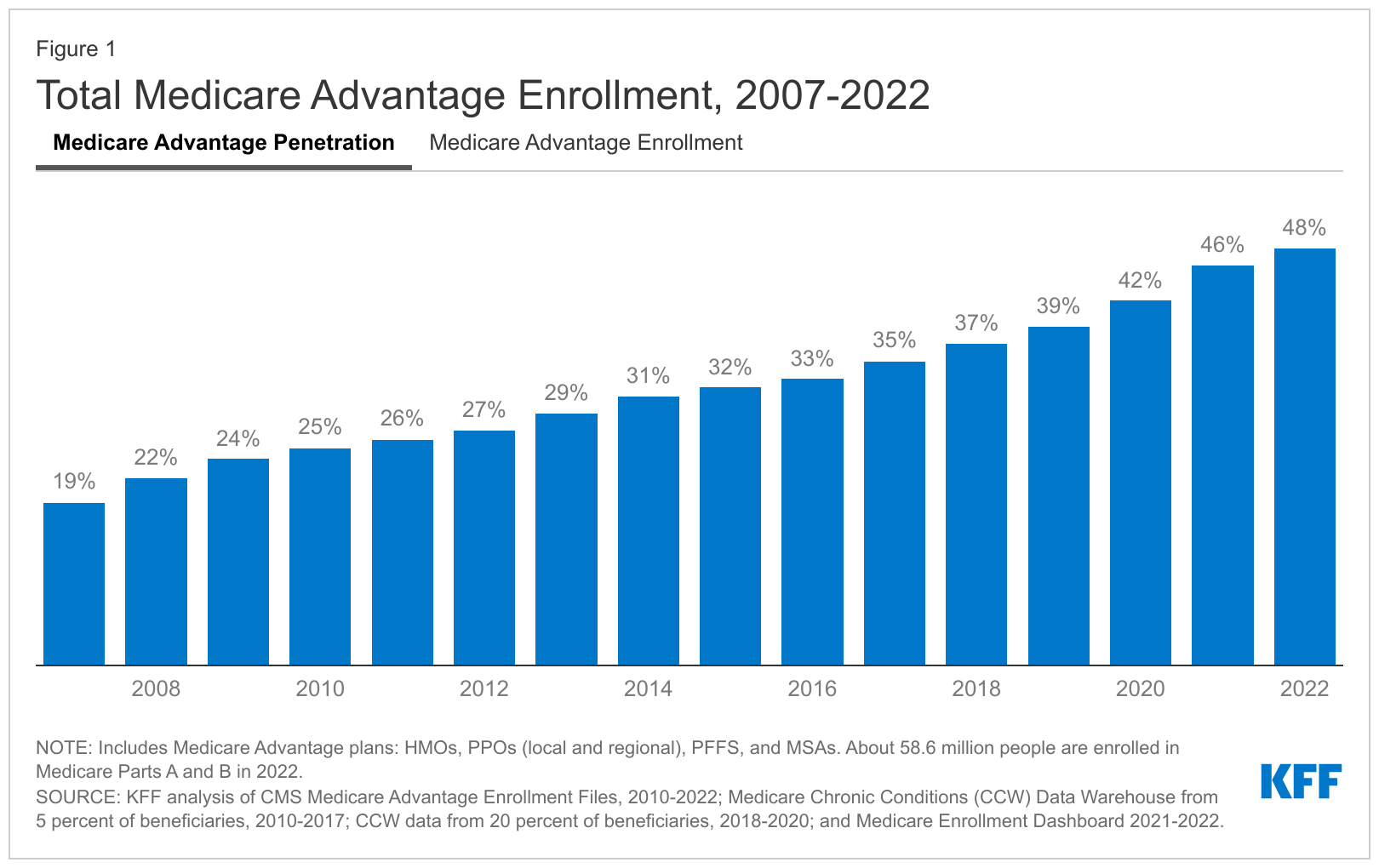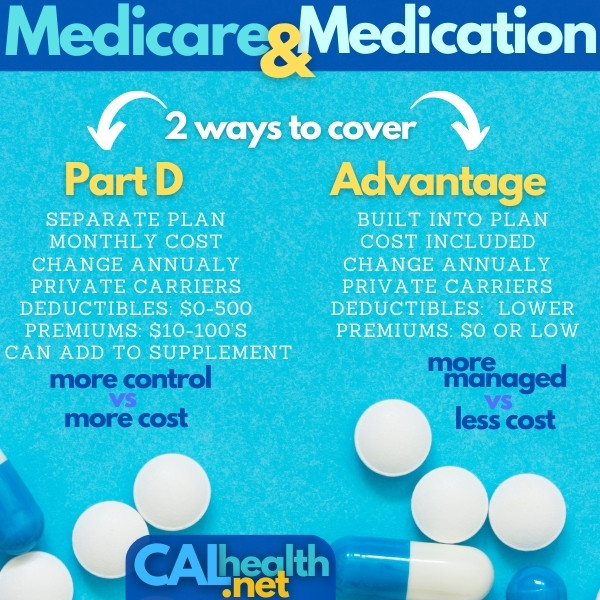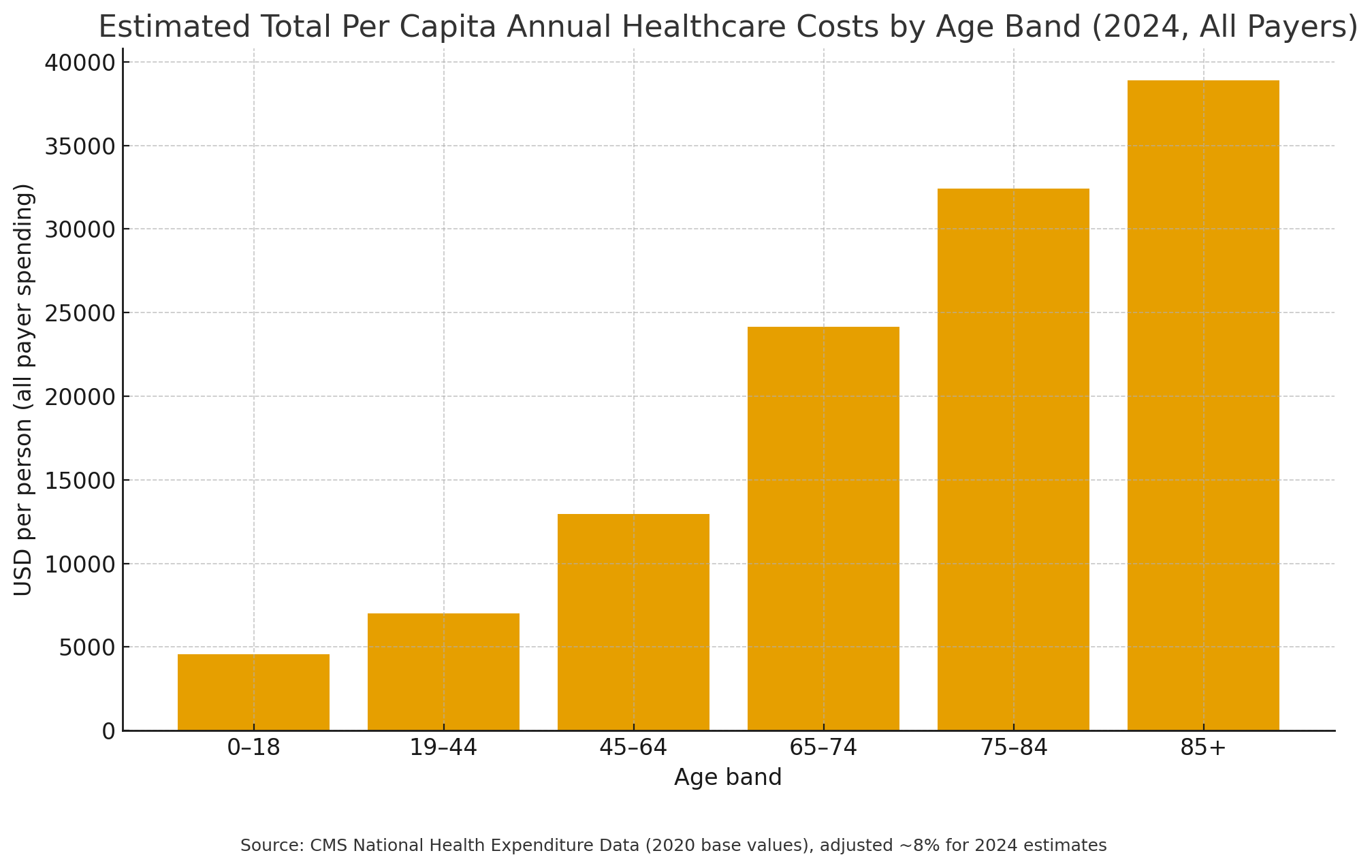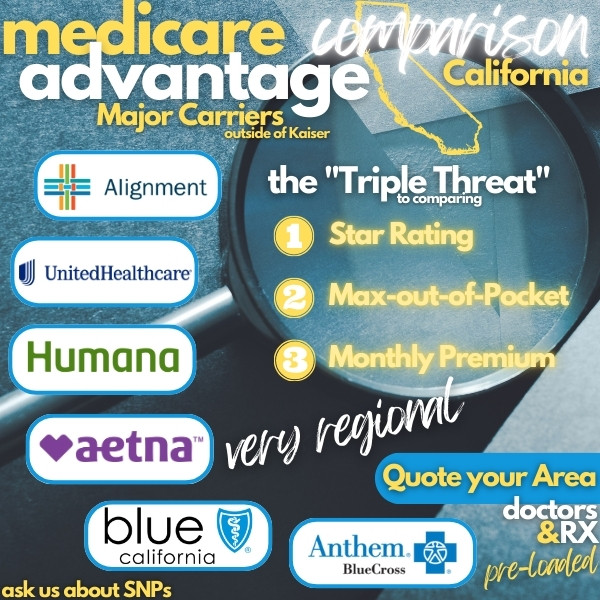
California Medicare Options - pick YOUR medicare plan

a simple guide to picking a medicare plan...for you!
You can get an instant quote almost anywhere. Then what?
We need to have a relative (and not the weird uncle) in the business who will cut through all the nonsense!
To really know what's important when comparing options.
A tried and true process to cut through the many options for the better values because there's just so much information out there.
That's what we'll do here and if you look at our Google reviews, you'll see that we really do try to help people.
Here are the main considerations when choosing a plan:
- Decision #1 - Advantage versus Medicare Supplement
- Decision #2 - Doctors and Medications
- Decision #3 - Price versus Benefit
- Decision #4 - Customer Reviews
Let's get started! We have some deciding to do!
Decision #1 - Advantage versus Medicare Supplemental Insurance
We have a big guide comparing Advantage and Supplements.
This really is the first fork in the road for anyone looking to fill in the gaps of Medicare.
We also looked at why going with Medicare alone leaves you open to exposure for bigger bills (the 20% coinsurance of Medicare's allowed amount with no ceiling).
So...what's the trade-off with Advantage plans and Supplements.
Really, it's a trade-off between network and care control - versus - price.
Great...what's the actual effect of this in the real world?
First, the nuts and bolts.
With Advantage plans, Medicare transfers the responsibility of paying
for health care to private carriers. These carriers attempt to bend
the cost curve of delivering quality care with networks and other rules around care
management.
As a result, there's a cost-constraint on care. There's both a positive and negative to this.
A negative because there may be situations where a certain course of treatment will be tried (or even denied) first (cheaper) before other options.
Also, there can be a fixed network of doctors/hospitals that you have to remain in for benefits or to pay less and it's usually based on your local area.
Good in that....the result is reflected in the monthly price! In fact, with the crazy medical inflation these days, we won't be surprised if the Advantage market just keeps growing.

It jumped from roughly 42% to 54% since 2020!
So...read the review for more detail but let's cut to the chase.
Can you afford the upfront monthly cost with Medicare Supplements?
For many people, this is not a decision. Advantage Plans are generally lower cost monthly but with more control on who you can see how that's managed. (learn more about the trade-off and how to work that in your favor).
So...
- I can't afford higher monthly premium - Advantage plans may be the right fit
- I can afford more monthly and really want control over doctors and care - Supplements may be the better fit (G plan is very popular for new enrollees)
We're happy to walk through your situation and there's no cost for our assistance.
Quote Medicare Supplements, Advantage plans, and Part D from major carriers with your doctor and medication info included:
Let's turn to the network question next.
Decision #2 - Doctors and Medications
If you choose a supplement, any doctor that takes Medicare will be included so that's less of an issue.
If you choose the Advantage route, this becomes a big deal depending on how important your doctors are to you.
Before technology, this was such a nightmare! Different carriers. Different networks. Different medical groups.
Now...it's (more) simple!
With our Quoting System, you can enter your doctors/medications and the system will automatically show you the options by cost that include those doctors!
You don't understand how cool this is and it will be available to you every open enrollment to make sure you're getting the right plan.
At no cost to you! Access your personalized quote above.
What about medications? That's the other key piece that can really differ from person to person.
If you choose the supplement route, you would get a separate Part D plan (can be different carrier and generally is).

You can also run that Part D quote above instantly.
If you do not enroll in a Part D plan when eligible, there's a 1%/month penalty that keeps increasing! Reach out to us with any questions on this.
For that reason, at least get a "placeholder" plan right away and you can change plans at the end of each year!
Now, if you go the Advantage route, Part D (medication) will likely be built into the plan.
We help chase down which doctors work with which plans (the online directories are always helpful) and you can enter your medication info and the system will automatically show which plans include your medications.
As insurance folk, we have to geek out on this. You're talking about an hour of work in the olden days!
It's all instant and there's no charge or obligation to you here!
Techmology.
Once we have the "Suite" of plans available to us...then what?
Decision #3 - Price versus Benefit
Let's break this into two different directions.
First Medicare Supplements
That's pretty easy..the G plan is the go-to option and for good reason.
Medigap "Real Deal": Compare F, G & N
Doctor Visits
How to Compare
Availability
Medigap Benefit
Plan F
Plan G
Plan N
Part A coinsurance & hospital costs (extra 365 days)
100%
100%
100%
Part B coinsurance / copay
100%
100% after Part B deductible
Copays apply [1]
Blood (first 3 pints)
100%
100%
100%
Part A hospice coinsurance / copay
100%
100%
100%
Skilled nursing facility coinsurance
100%
100%
100%
Part A deductible
100%
100%
100%
Part B deductible
Covered
Not covered
Not covered
Part B Excess charges [2]
Covered
Covered
Not covered
Foreign travel emergency (to plan limits)
80%
80%
80%
Out-of-pocket limit
N/A
N/A
N/A
[2] "Excess charges" are up to 15% above the Medicare-approved rate when a non-participating provider bills more; Plans F & G cover these, Plan N does not.
Only difference between F and G is the Part B deductible (2025: $257/yr). Significant price differences can occur by carrier and age.
It covers all the major holes of Medicare except for the Part B (doctor) deductible which is roughly $257/year (2025 amount; increases a bit each year).
The G plan is the comprehensive medicare supplement option to new enrollees since the F plan is no longer available to NEW enrollees under a certain age.
More importantly, the G plan covers Medicare excess which is the 15% more that doctors are allowed to charge ABOVE what Medicare allows.
Excess is tough to gauge. On one hand, it means you have to pay the 15% more than what Medicare allows for doctors that charge the extra amount. Getting a good sense for how many doctors apply this can be tricky.
So then...it's easy! Just run the quote above and price out the G plan across the carriers. A high deductible version of the G will bring costs down but still keep a (higher) cap on back-end.
The benefits are standardized so a G plan will have the same benefits AND networks from carrier to carrier.
Some carriers have little bells and whistle versions of the G plan (Extra, etc) but quote/compare the standard G to size up the pricing.
Okay...that's the easy part. What about Advantage plans?
Goodness...there can be 50 plans in a given area and it's difficult to tell what's different.
There may be a dozen plans with low or no monthly premium! What gives?
First, we've hopefully narrowed the options to those that include our medications and other requirements(run the quote here).
This should narrow it down a bit!
Then what to do?
Next up, focus on the Triple Threat!
How the plan treats big bills is a huge deal.
It's easy to get excited by bells and whistles, etc but keep track of the core benefits.
The protection on the back end is the main attraction!
It's basically lays out your exposure for out-of-pocket in a bad year. This is insurance after all...
This is your potential exposure in a calendar year with signficant health care costs.
There can be quite a range and we want to make sure to know our exposure if we have really big bills in a calendar year.
Really aim to lower this Out of Pocket Max exposure as part of your decision making.
Why?
You're entering a period of time in your life where healthcare costs are on the rise.

The advantage plan can now be more expensive than a supplement IF we have bigger bills!!
We really want you to understand what's in YOUR interest!
Age 65+ is not the best time to take that bet so keep max out of pockets at a manageable level in case of bigger bills.
That should cut down a lot of the options and leave a few solid plans with affordable monthly premiums and low max out of pockets.
Generally, the copays and other benefits will fall in line since in today's medical world, the real cost is around facility (hospital) care and that's the max-out-of-pocket.
The other big driver of cost is medication but we've already taken that into account with our quoting system above.
So...now what?
Decision #4 - Customer Reviews
For supplements, cost is the big driver although there are some carriers that have longer track records with Medicare.
There are dominant carriers in California but we need to see who is priced well for your situation (area and age).
Between price and carrier stability, we usually have an exact plan to choose and enrollment is now easy and online.
As for Advantage and Part D benefits (added to a supplement generally), the Star Ratings are a huge resource since there are so many options and they're so similar.
Our meds should already be entered and total out-of-pocket pricing is given so it then comes down to how easy it is to work with the carrier.
That will be included in the personalized Part D quote. Along those lines...
Advantage plans are where we lean on Star Ratings more heavily.
If we have 4-5 plans that all look pretty similar for the main attributes, how do we decide?
Again, this assumes they all work with our doctors/hospitals.
Hello Star Ratings!
Remember, it's not JUST doctor network and medication constraints with an Advantage plan.
The carriers has more "say-so" on what treatment is allowed or offered.
The Star Ratings captures (as best we can) how happy prior members are with balance in that equation.
Some carriers might be more "active" in this regard and that will generally show itself in the customer reviews along with the usual paperwork requirements that goes along with any insurance policy these days.
The Star Ratings will be available through our personalized Advantage proposal here. Aim for 4+ stars!
There are two additional considerations out there in the Advantage world:
Part B Giveback plans: they can pay towards your Part B premium! These keep expanding in terms of market share for Advantage plans.
SNP Plans: specially designed if you're eligible for medi-cal and/or have certain chronic illnesses
Now....let's say you've read all this and just don't want to mess with it.
There's no cost for our assistance and all we do is help people figure out what works for them.
Request your proposal and we'll get to work. Just need date of birth, zip code, medication/dosages, and doctors.
We purposely kept this review at just high-level plan selection strategy. If you're really confused by the whole Medicare switch over, reach out to us with ANY questions.
As a recap on how to pick the right Medicare plan:
- You really have to decide on Advantage versus Supplements. They're two separate worlds really. Control/Access versus Cost. Can you afford higher monthly cost with a supplement? Be honest with this question as it will keep coming up year after year!
- Enter your doctors and medications into our personalize quote tool so you see the plans that work with you
- Quote the different plans within your "style" (Advantage versus Supplement); focus on G plan for supplement and keep track of lower max exposure for Advantage.
- Wrap it all up with confirmation from Star Ratings!..especially for Part D and Advantage plans where there are so many offerings
- Reach out to us with any questions! As a licensed California health agent, there's ZERO cost and no obligation with our assistance and it's time to go with people who have your interest at heart (hopefully, the above summary shows this but check out Google Reviews just in case)
There is no cost for our assistance and no question is too small.
Call 800-320-6269 or email us at help@calhealth.net
We do not offer every plan available in your area. Any information we provide is limited to those plans we do offer in your area. Please contact www.medicare.gov or 1-800-MEDICARE (TTY users should call 1-877-486-2048), 24 hours a day/7 day a week to get information on all of your options.



